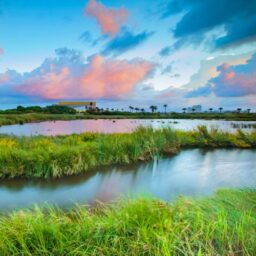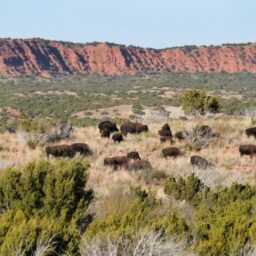Keeping the Gulf Coast Strong
Read the original story here, posted on September 25, 2018.
The spotted seatrout is one of the most prized targets of saltwater recreational fisheries in Texas. The sport fishing industry overall generates more than $2 billion in the state and supports thousands of jobs along the Gulf Coast.
Keeping this industry strong requires understanding the trout’s reproductive patterns and habitat needs. With mature trout, some of the best fishing areas are also good spawning habitats, but preserving areas that are the best locations for them to reproduce will help maintain a stable population.
Mapping these locations is difficult because of the darker green waters of the Gulf.
Although seatrout are generally known to aggregate and spawn in estuaries and bays along the coast of Texas from April through September each year, the specific locations and distribution of critical spawning habitats have not been identified or characterized. This lack of knowledge limits the ability of state and federal agencies to monitor, assess and manage this ecologically and economically valuable fishery.
Researchers at The University of Texas Marine Science Institute have come up with a creative solution to this problem.
“Waters in Texas are extremely full of life, from turtles and fish down to microscopic plants and animals. But all this life creates murky water and makes it hard to see,” says marine science Ph.D. candidate Chris Biggs.
Fortunately, Biggs points out, the spotted seatrout is not a member of the trout family but is a drum fish. “They actually make noises underwater,” says Biggs. “We can use underwater microphones to study them and figure out what’s going on.”
THE WORK WE DO HERE IS FOCUSED ON UNDERSTANDING WHAT MAKES THESE BAYS AND ESTUARIES TICK SO THESE WATERS CAN CONTINUE SUPPORTING THE LOCAL COMMUNITIES AND ECONOMY FOR GENERATIONS.
Male seatrout make courtship sounds that are unique to the season and location of their spawns. Biggs and his team use passive acoustics (hydrophones) to identify the locations of groups of males looking to mate.
“This research is trying to get at questions as far as how these fish respond to changes in environmental conditions, how they respond to these big major storm events such as Hurricane Harvey, and also how they deal with the human impacts of increased shipping or fishing activities,” says Biggs.
Given the importance of this species to regional fisheries and coastal ecosystems, mapping spawning sites for spotted seatrout will be invaluable to state and federal agencies tasked with maintaining healthy, sustainable fisheries and ecosystems that benefit local communities and livelihoods.
The project also provides a unique opportunity to get local anglers directly involved in science by sharing their knowledge of the fish, increasing their support and contributions to research that seeks to improve fisheries management.
Improved management of spotted seatrout resources should help ensure sustainable populations and improve fishing opportunities.
Keeping the Texas coast strong is a priority for UT’s Marine Science Institute. “I am one of 80 researchers and graduate students working at the Marine Science Institute in Port Aransas,” says Biggs. “Most of the work we do here is focused on understanding what makes these bays and estuaries tick so these waters can continue supporting the local communities and economy for generations to come.”
Media Contact
University Communications
Email:
UTMedia@utexas.edu
Phone: (512) 471-3151










